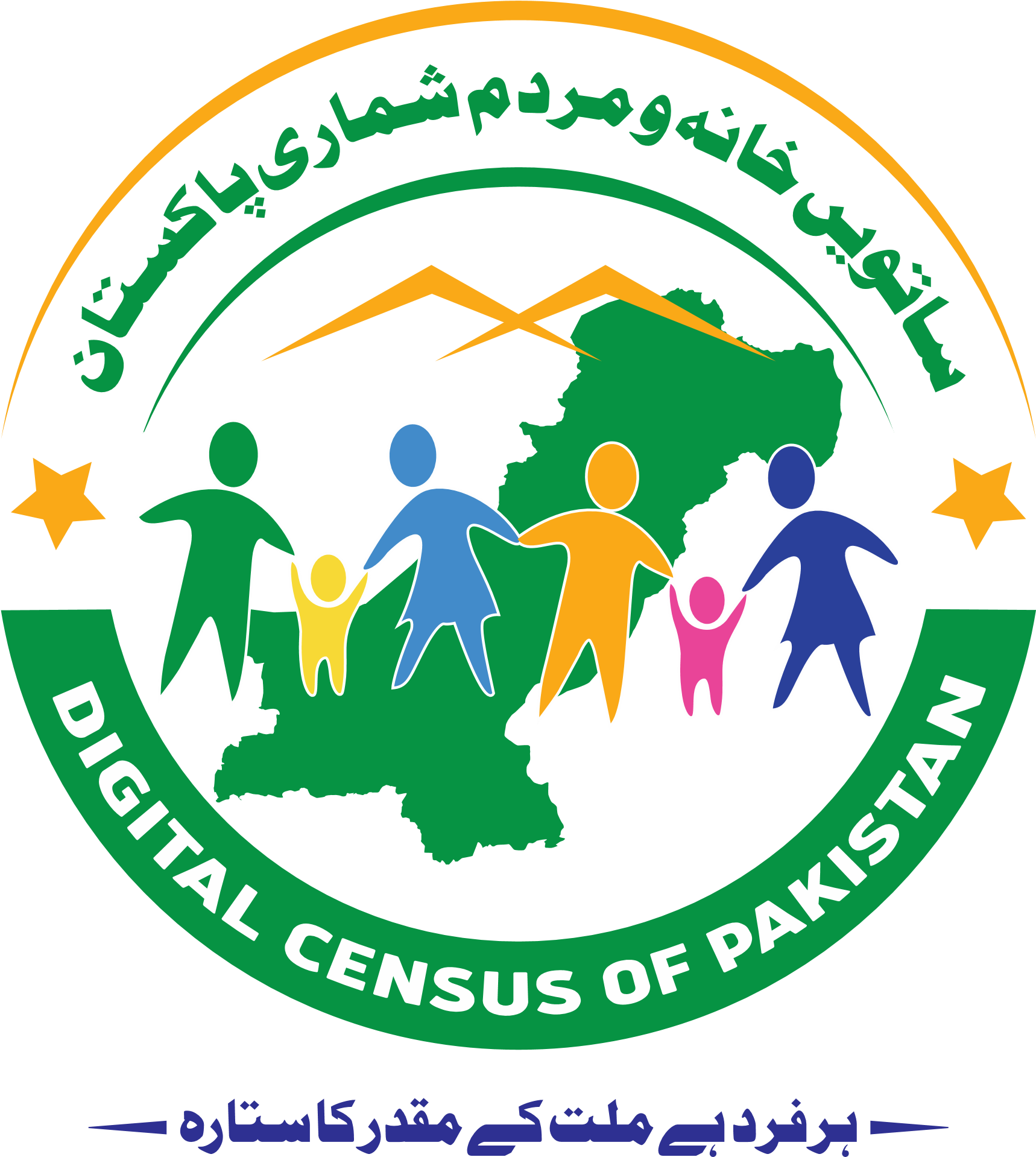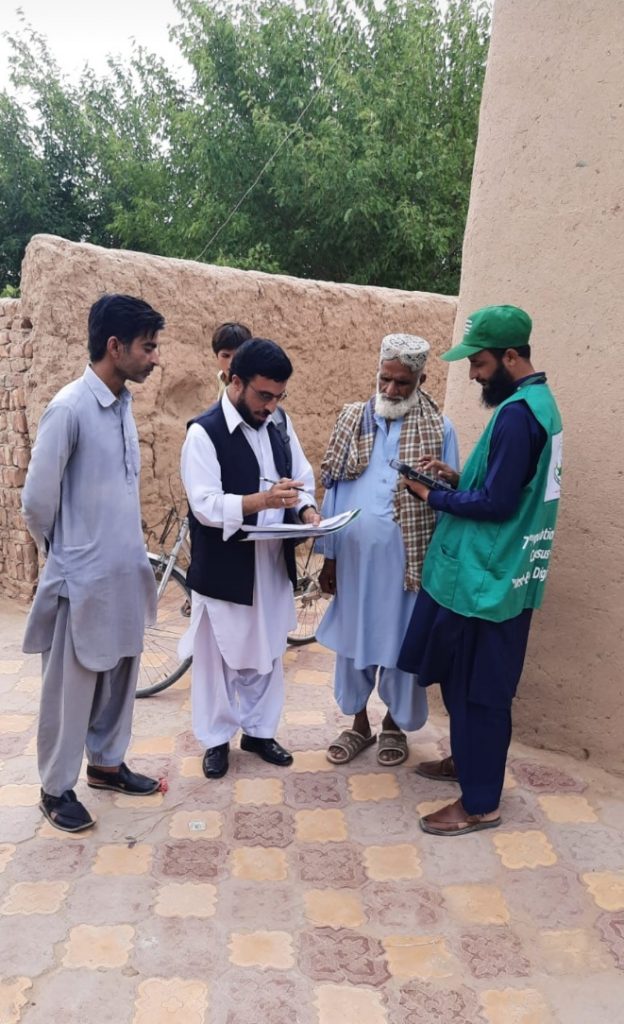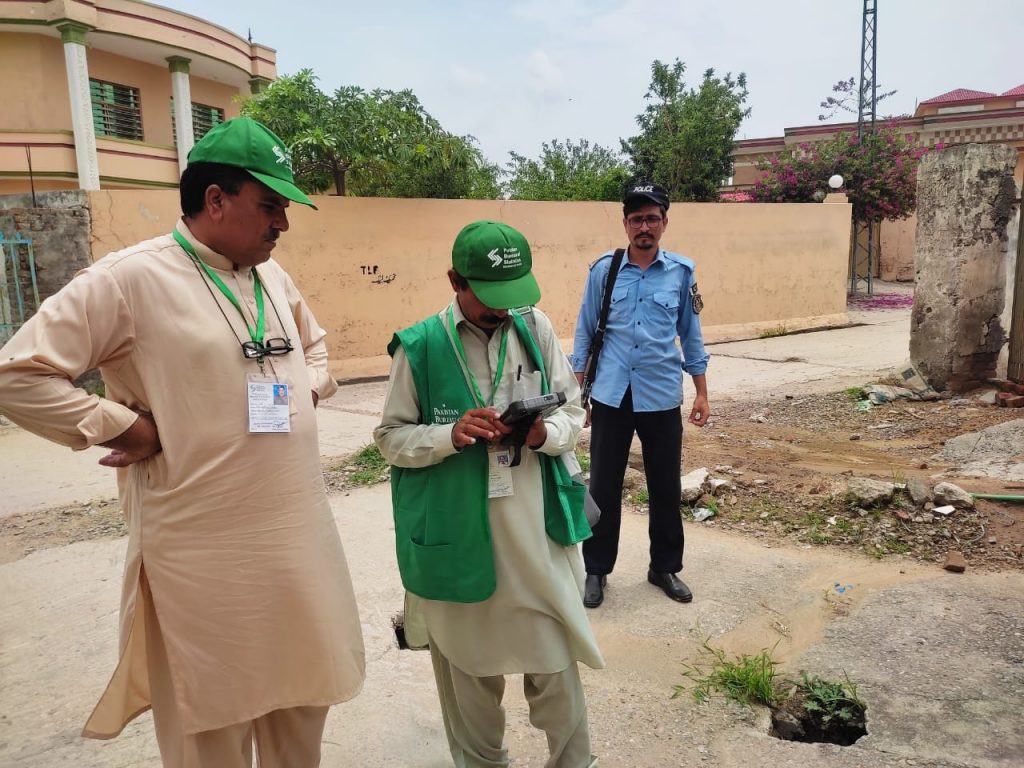

Review of Pilot Census









First consultative meeting on 7 th Population & Housing Census-2022 was conducted on 06-9-2022 at 03:00 P.M under chairmanship of Mr. Ghulam Fareed Secretary, Government of the Punjab, School Education Department, in Auditorium of P&D Board Punjab, Lahore. Meeting started with recitation of verses from the Holy Quran, followed by a round of introduction.
2. Director General, Bureau of Statistics (BoS) Punjab briefed about the background and agenda of meeting and informed that the meeting is being conducted to share the proposed procedures & methodology for next census with the participants and to get feedback/suggestions of stakeholder departments for proper execution of the census.
3. Mr. Muhammad Sarwar Gondal, Team Leader/ focal person for Digital Census, Pakistan Bureau of Statistics (PBS) gave a detailed presentation, he while explaining the background informed that Council of Common Interest (CCI) in its 45 th Meeting held on 12 th April 2021 decided to approve the final results of 6 th Population & Housing Census-2017 and also decided that “the process of next census should start as early as possible according to international best practices by using latest technology”. He informed that accordingly Census Advisory Committee (constituted by the Government of Pakistan for recommendations for adoption of best practices for upcoming census with representation from all provinces) has done extensive work and reviewed the whole process of Census 2017 and identified the issues that has brought criticism on the process and accordingly devised recommendations with measures to avoid all such bottlenecks in next census for transparency, credibility and broader acceptability. The Committee emphasized on the involvement of stakeholders
especially provinces from initial stage of planning to compilation of results therefore consultative process has been initiated with provinces for their feedback before finalization and approval from the relevant forum. He then presented the broader recommendations of the committee with complete roadmap, methodology and timelines to complete the process. It was further informed that 7 th Population & Housing Census will be the first ever “Digital Census” of Pakistan and data will be collected electronically through tablets linked with GIS
for real time monitoring & complete coverage. The data collection modes using modern technology were explained in detail to all honorable participants. The role of Provinces in the field of data collection & monitoring process was highlighted for successful conduct of the important & gigantic activity of paramount importance. He further informed that a pilot will be conducted in March, 2022 and all tools will be finalized after review in lines with pilot results. It was informed that geo-tagging of all structures (including structures with economic
activities, masjids etc.) will be done during census and this will provide basis of sampling frame for Economic Census and other specialized surveys in future. He also shared with the house that, Computer Assisted Telephonic Interview(CATI) will also be used during census
operations for real time data quality monitoring and to ensure coverage.
4. After the Presentation the forum was opened for questions and comments. The Chair while initiating the discussion inquired that whether CNIC was mandatory requirement for census-2017. In response, Mr. Muhammad Sarwar Gondal informed that data of all persons was collected during Population & Housing Census 2017, however CNIC was checked with NADRA record in random cases (6.5 million
CNIC) and use as deterrent for over reporting. He added that one of the major criticism by experts were on this aspect as it is against the UN principles of data collection, therefore it is recommended by committee that CNIC must be delinked with data collection.
Mr. Muhammad Subhan Butt , Additional Secretary (Confidential) S&GAD, Government of the Punjab added that as true headcount is needed for effective planning therefore CNIC may be considered mandatory during the field work otherwise there are chances of over reporting. Responding to the comment it was informed that the objective of census is to count people regardless of their status and
whether They have CNIC or not for planning purposes therefore linking of CNIC will not serve the actual purpose of Census. He further informed that registration is the mandate of NADRA and Census is truly separate exercise with clear objectives therefore the technical experts strongly recommended to not to link CNIC with enumeration. During discussion on questionnaire, it was proposed by Chair and Dr. Asim Altaf, Additional Secretary (Tech.), Primary & Secondary Healthcare Department suggested for including questions regarding out of school children, immunization and skilled birth attendance in the questionnaire. It was informed that out of school information question has already part of drafted questionnaire and inclusion questions regarding immunization will be considered and decided after input of the
technical experts, however immunization and skill birth attendant questions are already extensively covered in bigger sample survey representative at district level.
Mr. Hameed Malik (A DG, Board of Revenue Punjab) proposed that census tools may be shared with stakeholders for feedback. He further added that BOR has hired 8000 E-Patwaris which can be utilized by PBS for digital data collection for upcoming census. PBS team assured that the proposed questionnaire will be shared with departments for recommendations and appreciated the support of E-Patwaris for
data collection. While discussing on the proposed data enumeration methodology i.e. de-jure where the person is counted at place of usual residence, the chair enquired that that what steps will be taken to deal with possible double counting of the persons who usually
live in one city but have different home town. It was explained that the only effective way is the extensive and exhaustive training of the field staff regarding concepts of usual residence and other allied definitions for clarity to capture actual data. Joint Chief Economist, P&D Board mentioned that lot of issues regarding previous census were raised due to urban/rural definitions therefore PBS may lead in devising
mechanism for uniformity of the definitions of urban / rural. In response Mr. Muhammad Sarwar Gondal informed that this is purely a provincial subject dealt by revenue and local government departments of respective provinces, therefore PBS can only sensitize the provinces on this issue for harmonizing the definitions of urban/ rural areas. Ms. Shrien Naz, Additional Secretary (P) Agriculture Department Punjab asked about the role of Agriculture Department in the census. It was informed by PBS team that all human resource for data collection (Enumerators, supervisors & trainers) will be provided by Provincial Governments and usually they are from Education, Revenue, Agriculture Department etc. therefore Agriculture department may provide their trained personnel in this regard, and in future their services can also be utilized for the proposed Integrated Agricultural Census which will be conducted after Population & Housing Census.
Mr. Asim Javaid Additional Secretary Home Department, was of view that census is a huge activity linked with collection of detailed data of individuals and need proper storage and security systems for successful completion of electronic data collection. Mr. Muhammad Sarwar Gondal explained that Digital Census is a national activity and will conducted with collaboration of various national institution like PTA,
SUPARCO, NADRA, Ministry of Information, Technology & Telecommunication. As National Telecommunication Corporation (NTC) is mandated for provision of storage and data security infrastructure therefore consultations on utilization of services of NTC is in progress to ensure secure transfer and storage of data. Director General, BoS Punjab suggested for harmonization of definitions on key variables; slum areas, literacy rates, participation rates and out-of-school children, as it causes confusion among data users. He further proposed that for quality data collection option of using University Graduates for field work, may also be explored. PBS team informed that census advisory committee has also recommended the same and in this regard consultation with HEC are in progress.
5. The Chair concluded the discussion with remarks that census is a crucial national activity of extreme importance, therefore need prudent planning for its successful conduct. He has shown satisfaction on the proposed recommendations for conduct of Digital census and was of view that this consultative process will lead to broader ownership of whole process and results. He showed commitment that School Education Department will provide required Human Resource for the field work. He also added that all provincial departments will extend full support and cooperation to the PBS in conducting the census.
Decisions:
After detailed deliberations, the following decisions were made: –
1- PBS will hold such consultative sessions regularly with the provinces in order to
get their feedback on the process
2- The census questionnaire will be shared with stakeholder departments and
finalized after feedback
3- All provincial departments will extend their support/cooperation to the PBS in
conducting the census-2022
The Sixth Census-2017 was conducted in two phases. Phase-I started from 15th march to 14th April, 2017 in which 61 Admin Districts comprising of 79,773 blocks were enumerated. Phase-II started with a gap of 10 days from 25th April to 24th May, 2017. Eighty-Nine (89) Admin Districts comprising of 89,170 blocks were enumerated during this period. The field operation consisted of first 3 days for house listing followed by 10 days for population count and one day for enumeration of homeless population. According to Census-2017 the country’s total population stands at 207.7 million, with an annual growth rate of 2.4 per cent.
The Second population census was conducted from 12th January to 31st January, 1961 on de-jure basis. The housing census was taken in September, October 1960 following by Population Census in 1961. The Housing census replaced the house-listing operation. 2nd census of Pakistan in 1961, the population was 93 million, with 42.9 million residing in West Pakistan and 50 million residing in East Pakistan.
The third census of Pakistan was scheduled in 1971, but it was postponed due to the Indo-Pakistan War of 1971, then the third census was held in 1972. According to the 1972 census, the population of Pakistan was 65.3 million. After 1972, the Census Organization was merged into the Ministry of Interior.
The fourth decennial Population Census of Pakistan was conducted in March, 1981. It was preceded by a Housing Census in December, 1980. In the Population Census two questionnaires were used; one short and the other long which included all topics of the short questionnaire and some more usually included in a comprehensive population census. According to the 1981 census, the population of Pakistan was 84.3 million.
The 1998 Census of Pakistan was the fifth Pakistan national census. It provided a detailed enumeration of the population of Pakistan. At the time it was conducted under the authority of the Pakistan census organization, an agency of the Government of Pakistan According to the 1998 census, the population of Pakistan stood at 132.4 million. Despite being mandated by to be held 10 years that took place 17 years.
In 1951 the first census was conducted from 9th February to 28th February on de-facto-cum-de jure basis and an individual Census Schedule was used. The Dominion of Pakistan (both West and East Pakistan) had a population of 75.7 million, in which West Pakistan had a population of 33.7 million and East Pakistan (today Bangladesh) had a population of 42 million